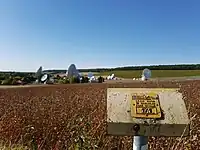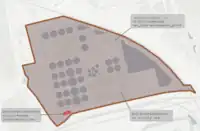Key:utility
 |
| Description |
|---|
| Specifies the type of utility infrastructure which a feature represents. |
| Group: infrastructure |
| Used on these elements |
| Documented values: 14 |
| Useful combination |
| Status: approved |
| Tools for this tag |
|
The key =* was intended to be used with marker=* to specify the type of utility infrastructure (underground gas pipelines, power cables) which a marker represents.
It can be combined with man_made=utility_pole or even building=service, man_made=street_cabinet, man_made=manhole, and landuse=industrial.
Utility networks are essential components for human activities both in large cities or in country. They provide useful energy or fluids from production sites to consuming places with according pipes or cables. Utility networks usually covers both transmission and distribution activities and aren't restricted to final customer feeding.
It sounds similar to keys like substance=* for pipelines, both substance=steam and substance=hot_water may be valid for =heating. The value of this key relates to a particular utility infrastructure, not a particular substance or form of energy.
Utility should not be confused with usage=* or other industries as they are particular activities related to particular public services or essential infrastructures other businesses rely on. Common values below are mostly enough, new values should be discussed and carefully added.
Most utilities match with UN International Standard Industrial Classification families.
See each value's page to get a summary of corresponding classes.
How to map

=* is a facility property. It means that it is used to describe perimeters as a whole, not every building or device inside.
When a given facility is self contained in a (fenced) perimeter, you would better use =* on the perimeter than on each building, cabinet inside if they are involved in the same utility.
We still use =* on individual building/cabinet contained in a wider perimeter involved in a different utility than the perimeter.
It's also true for buildings containing several rooms or devices: only the whole building will get =*.
It's valid for the wastewater plant beside: the perimeter has got =sewerage and the power substation feeding the whole facility with power has got =power.
Every other buildings involved in the wastewater plant operation only got building=industrial without =* on them for sake of concision.
Tagging
Add the tag =* to a feature which also has a primary feature tag, such as marker=* or man_made=utility_pole.
See documentation of features you intend to complete for particular usage guidelines.
Common values
Undocumented values
These older values have been used, but the meaning is not documented. Their usage sounds like out the scope of utility networks.